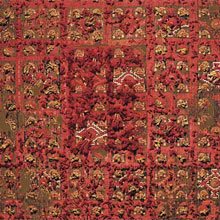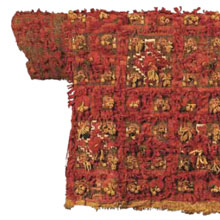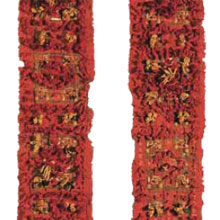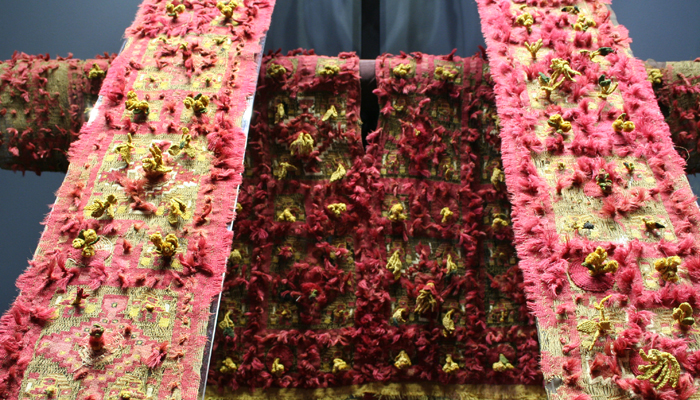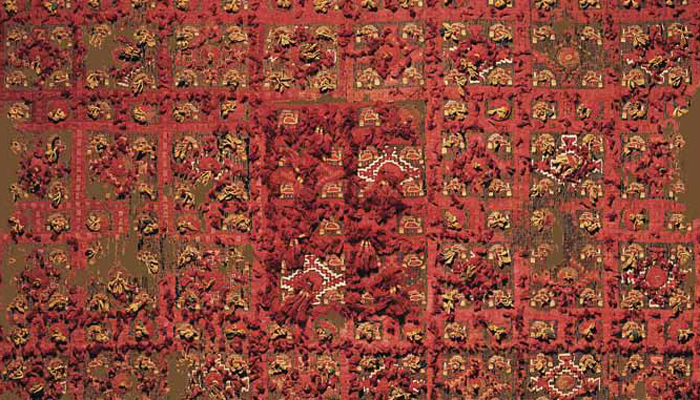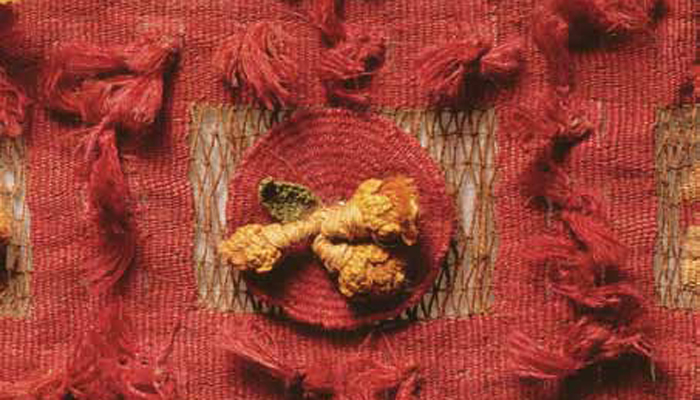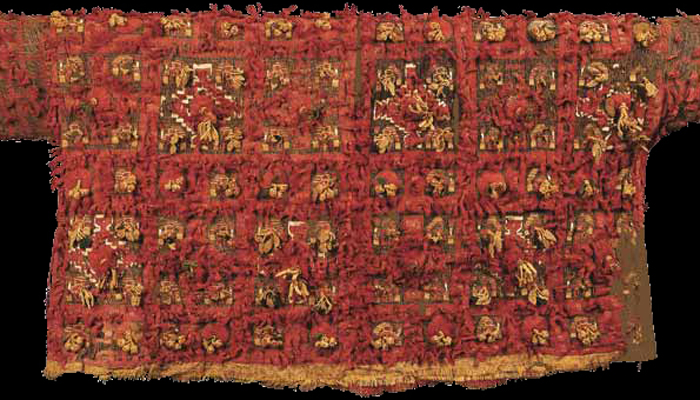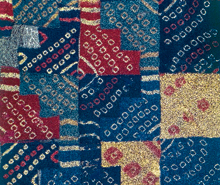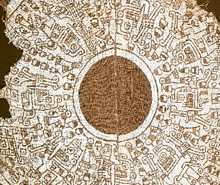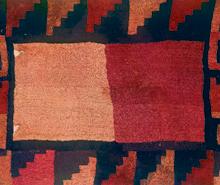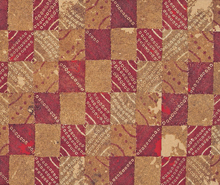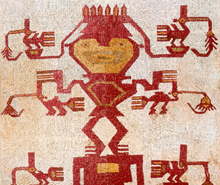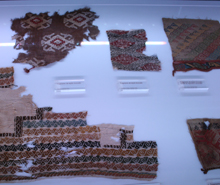Chimu ceremonial costume
I.
The Chimú people perfected textile artistry, transforming it into a prestigious and influential activity that spread along much of the Peruvian coast. Their weavers produced a wide variety of decorative items and garments, notable among which is this outstanding costume, made up of three pieces: a tunic, a loincloth with overskirt and a turban, all of which employ the same raw material, textile-making techniques and iconography.
The tunic or unku, which features the broad, short shape typical of garments made on the Andean coast, is covered
entirely with images. The loincloth and the turban are longer, simpler pieces of plain weave with decorative panels sewn on to their ends. The iconography is based on the overlay of three different textile structures to produce a rectangular representation module that is reiterated in almost all of the garments. This consists of a reticulated ground weave, at the center of which is a tapestry containing a stepped cross design surrounded by human figures with staffs, and double circles. Appliqués of tapestry and volumetric looped tassels and representations of different vegetables, including cotton, maize, and tubers are also sewn onto the ground weave. Different edging and fringes finish off the textile composition.
II.
One of the basic functions of Andean attire was to signal an individual’s membership in a specific group, with the subject and his or her attire sharing an essential identity. Brightly-colored,highly symbolic designs informed others immediately of the wearer’s ethnic identity, as well as other social and political qualities. As ceremonial attire, this costume invested its wearer with the power of the symbols represented upon it. In this extremely arid northern Andean coastal territory, the Chimú’s related power to mainly the ability to control agricultural fertility.
The representations on this costume are symbols that reflect the relationship between agricultural fertility and the rites practiced by the social elite, officials and priests. The reticulated ground weave, geometric designs, and human figures allude to the architecture of Chimú ceremonial centers and the activities performed there as the people paid homage to the mummies of their ancestral leaders. These garments issue forth an endless array of threedimensional representations of vegetables, metaphorically linking the people’s rituals and ancestors with agricultural fertility. The reticulated base also evokes fishing nets, in an attempt to symbolically transfer the abundant produce of this activity to the agricultural fields.




































